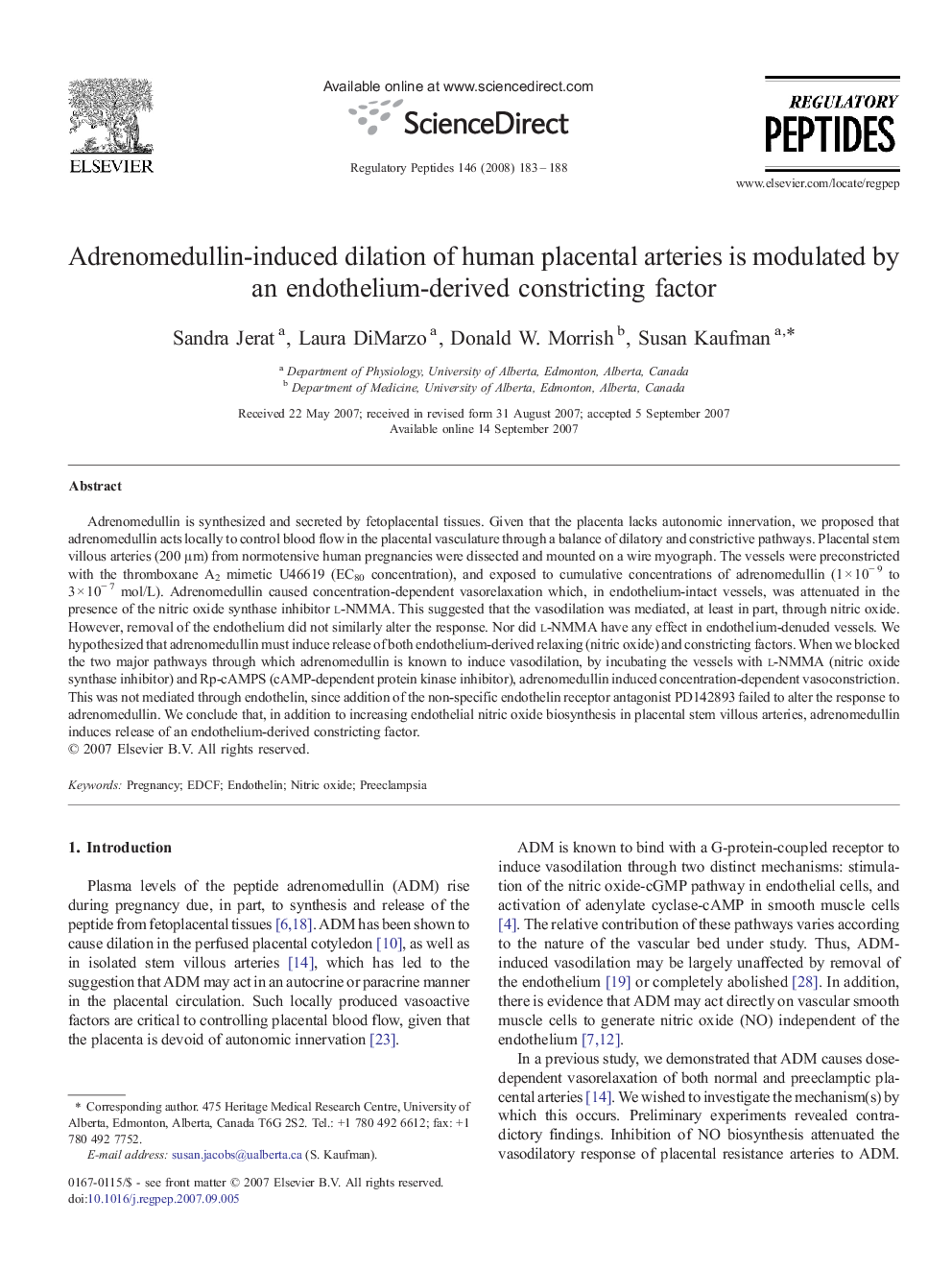| Article ID | Journal | Published Year | Pages | File Type |
|---|---|---|---|---|
| 2023238 | Regulatory Peptides | 2008 | 6 Pages |
Adrenomedullin is synthesized and secreted by fetoplacental tissues. Given that the placenta lacks autonomic innervation, we proposed that adrenomedullin acts locally to control blood flow in the placental vasculature through a balance of dilatory and constrictive pathways. Placental stem villous arteries (200 μm) from normotensive human pregnancies were dissected and mounted on a wire myograph. The vessels were preconstricted with the thromboxane A2 mimetic U46619 (EC80 concentration), and exposed to cumulative concentrations of adrenomedullin (1 × 10− 9 to 3 × 10− 7 mol/L). Adrenomedullin caused concentration-dependent vasorelaxation which, in endothelium-intact vessels, was attenuated in the presence of the nitric oxide synthase inhibitor l-NMMA. This suggested that the vasodilation was mediated, at least in part, through nitric oxide. However, removal of the endothelium did not similarly alter the response. Nor did l-NMMA have any effect in endothelium-denuded vessels. We hypothesized that adrenomedullin must induce release of both endothelium-derived relaxing (nitric oxide) and constricting factors. When we blocked the two major pathways through which adrenomedullin is known to induce vasodilation, by incubating the vessels with l-NMMA (nitric oxide synthase inhibitor) and Rp-cAMPS (cAMP-dependent protein kinase inhibitor), adrenomedullin induced concentration-dependent vasoconstriction. This was not mediated through endothelin, since addition of the non-specific endothelin receptor antagonist PD142893 failed to alter the response to adrenomedullin. We conclude that, in addition to increasing endothelial nitric oxide biosynthesis in placental stem villous arteries, adrenomedullin induces release of an endothelium-derived constricting factor.
